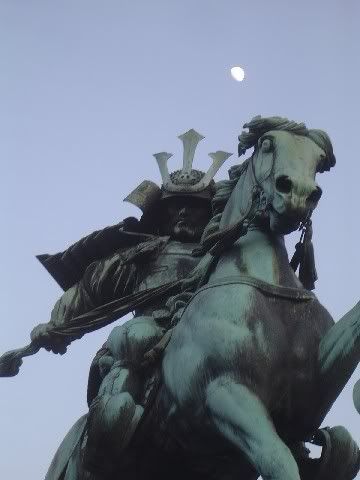3. Epicentre of evil and trade
Meang bought his ticket and gave me a lesson in purchasing my own.
As it’s the cheapest and fastest way to travel in
“Wu kuai de,” I had to learn. Kuai is Chinese slang for Yuan, the currency, so I had just learned, “A Y5 one.”
We boarded the modern train and headed for the city. People watched me like hawks. They were curious so watched my every movement and I had nowhere to hide. The oddest thing to me was, when I caught someone staring at me, they wouldn’t always look away. I would expect a Kiwi to avoid eye contact having been caught staring at someone, but not all Chinese people have that sense of discomfort.
Out the windows, we crossed large motorways that separated areas of old shack housing from high-rise buildings. Cars and bicycles used dirt tracks that connected busy roads, drivers speeding around pedestrians and brick fencing.
We arrived at the interchange station and walked to the underground train platform through a station that was best described as an unhygienic gritty dump.
Tiles on the floor were stained brown and black with dust and grime, having been tracked in from outside, while the walls were tinged a sickly green. With the amount of foot-traffic these subway stations saw each day, it would be a mission to clean.
On the platform, we joined the crowds trying to board an archaic carriage. I was comparing it to
Jan, a Kiwi-Asian, stood at a stereotypical height for Chinese women, not much over 150cm, and offered a big, nervous smile when we met her at the subway station in Guomao, a prestigious area of central Beijing. It was the first time we’d met as a friend had suggested I contact her as she was teaching English near
They led me into the silk markets nearby, where I wasn’t really interested in shopping. I wanted to take in the colourful stalls selling anything from luggage bags to clothing to jade carvings. I did, however, need a pair of sunglasses. The two of them chatted about life in
“You like sunglasses?” she asked.
“Yeah, how much for these?” I asked, pointing at a yellow-framed pair. I looked to Jan and Five-foot for help, but they stood back, a bemused smirk on each of their faces.
“Y90,” she said. This amounted to a little less than NZ$18.
“I can get a pair better than that in
“You not in
“Well, yeah, I suppose so.” And it was all a blur from there.
I was agreeing with everything she said and before long she had Y50 of my money in her pocket. In return, I had a cheap pair of sunglasses I wouldn’t have bought at a Two-Dollar Shop in
As we neared the very centre of the city, I began to feel intimidated, but not by the people on the train. I felt out of my depth, and unsure of myself. Jan, her Singaporean boyfriend Justin, and Five-foot were all relaxed while I was getting pretty anxious about our destination.
Since 1989, I’d thought the centrepiece of the Communist Party in central
The size of the square humbled me from the outset. As we exited the subway, surrounded by thousands of people sitting in the shade of trees, I saw the massive government building to the west, the museum to the east, and Mao Zedong’s mausoleum to the south, so far away. Whether I was correct to feel insignificant or not, the expanse that greeted us helped me feel justified enough.
We crossed the major avenue, maybe eight to ten lines wide, via an underpass populated with people selling such things as basic toys, homemade jewellery, and more interestingly, Mao’s little red book. I walked past them all, ignoring most of what I saw and what they tried to sell, and climbed the steps up to the square where men stood on the square flying kites, with strings reaching maybe fifty metres into the sky.
Maybe a hundred kites flew above the north of the square over the traffic hurtling along the major road. Spread amongst the kite-aviators, there were people everywhere. From tourists, both Chinese and foreign, to locals either out for a stroll or selling whatever they thought people may buy.
We meandered into the crowds and touts approached from all angles to offer postcards, umbrellas for the sun, Mao’s little red book, and so on. Kite flyers offered me their reins, which I declined. I was unsure if it was a service I would be charged for, and very unsure whether I could keep it flying. I didn’t quite trust the people who spoke to me in this situation as I doubted many of them would be genuinely friendly. Arguably to my detriment, I expected them to be on the prowl for easy bucks from unsuspecting tourists. So I ignored most of the people who spoke to me.
A little boy, maybe two years old, squatted in front of us to take a pee. I often saw young children wearing pants with a split in the rear, for ease of use on occasions such as these. Around Wudaokou, I had seen young kids squatting in gutters, on footpaths, or literally anywhere they felt the need.
“Look at that,” Jan said, as the boy finished and ran to his mum for a hug laughing. “He’s thinking, “Hey, I just pissed on
There my expectations were quashed. Sure, there was a major presence of soldiers in and around the square, but they seemed little more than window dressing. A monument stood just to the north of Mao’s final resting place, fenced off from the public. Servicemen stood on the steps facing into the crowds in all directions, yet they didn’t concern themselves with the general goings-on of the crowd. It seemed like the people themselves commandeered the community atmosphere and not those standing guard over it.


0 Comments:
Post a Comment
<< Home